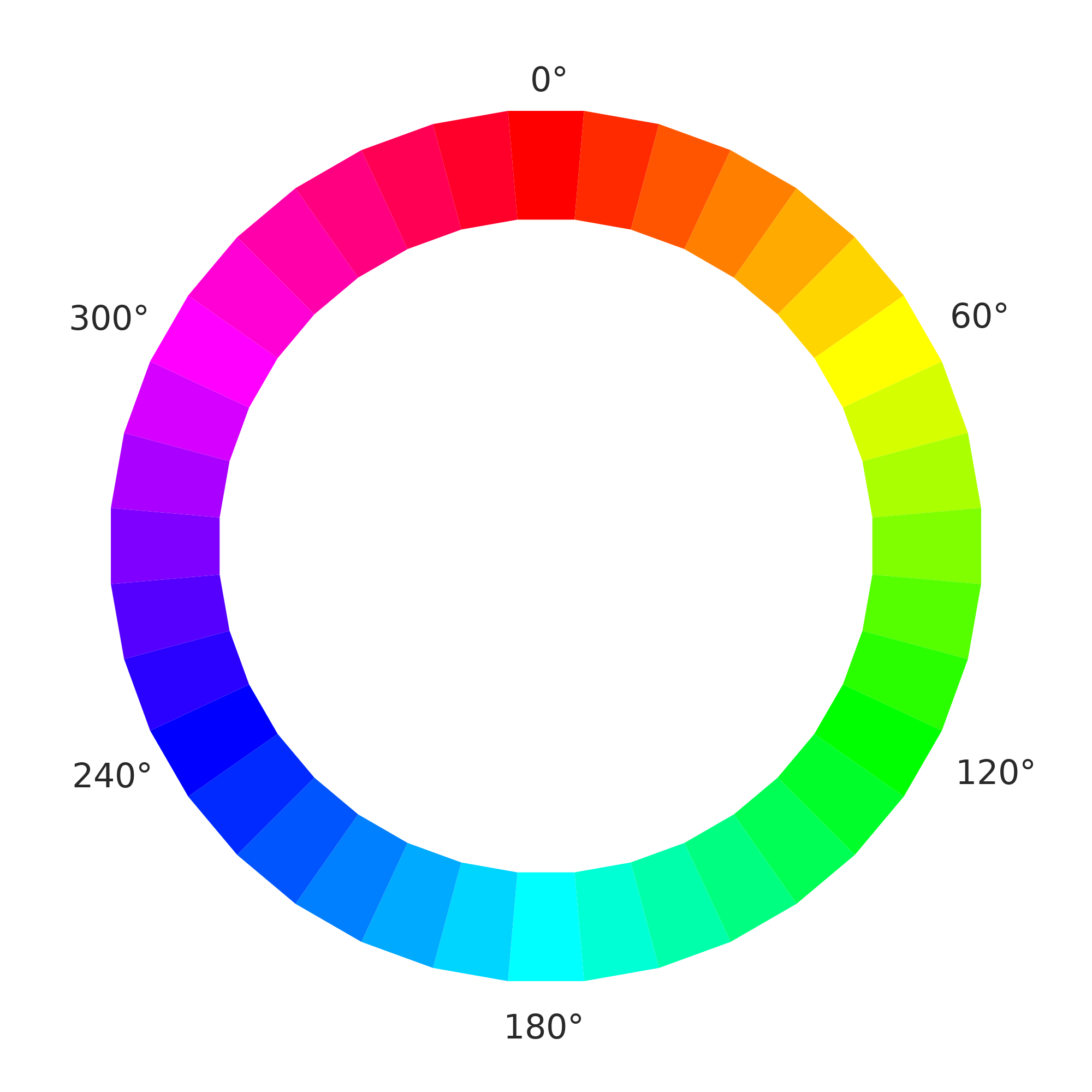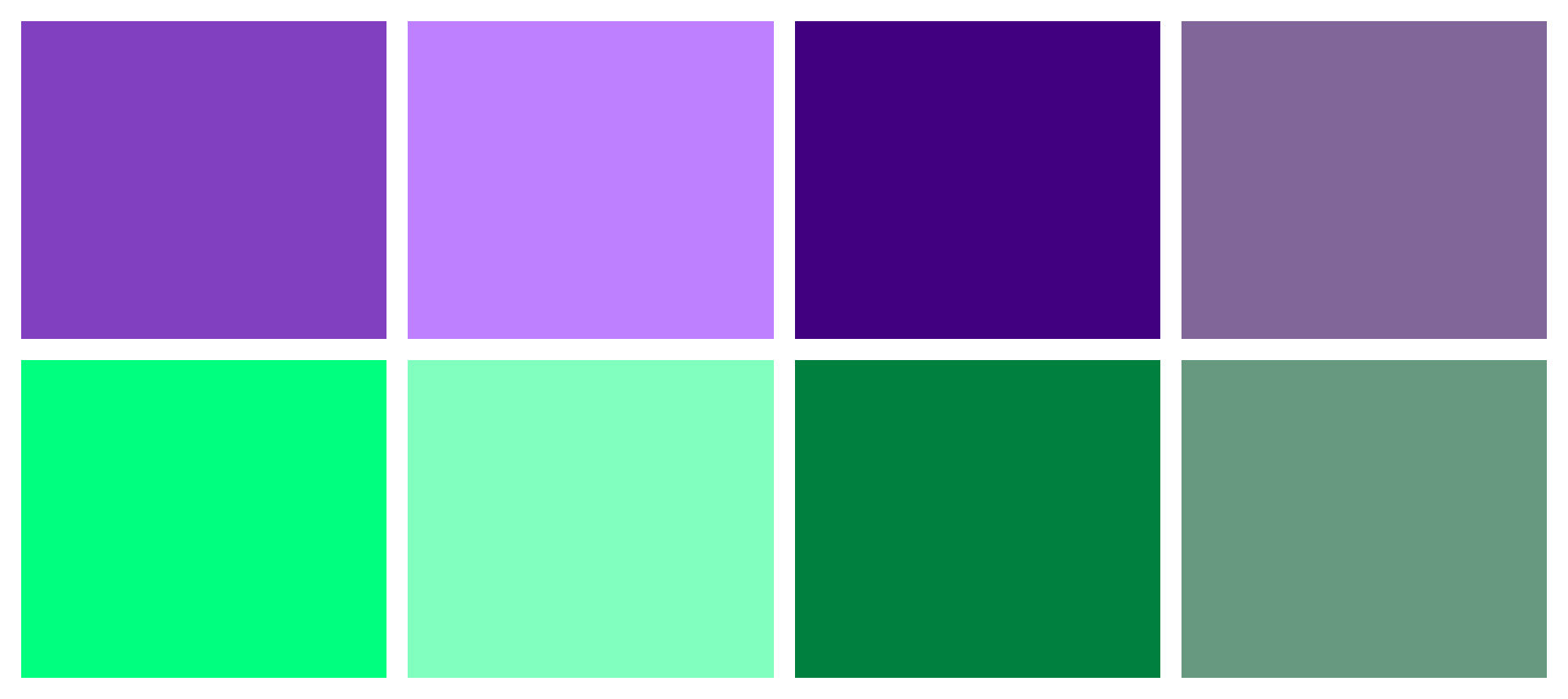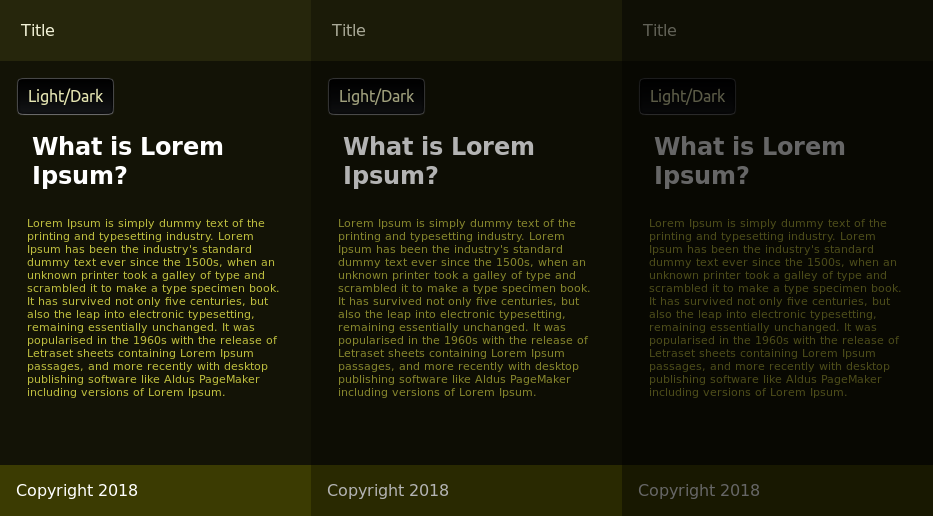CSS Variables (formally often called customized properties) are person outlined values that may be set as soon as and used many occasions all through your codebase. They make it simpler to handle colours, fonts, dimension, and animation values, and guarantee consistency throughout net purposes.
For instance, you’ll be able to set a model colour as a CSS property ( --primarycolor: #7232FA) and use this worth in any elements or fashion that makes use of your model colour (background: var(--primarycolor);).
In addition to providing cleaner and non-repetitive code, CSS variables can be utilized to construct colour palettes, enhance responsiveness, and create dynamic sort programs.
This put up is extracted from my information, CSS Grasp, which educate you to jot down higher, extra environment friendly CSS. You’ll additionally study to grasp instruments that can enhance your workflow and construct higher purposes.
Defining a CSS Variable
To outline a customized property, choose a reputation and prefix it with two hyphens. Any alphanumeric character will be a part of the title. Hyphen (-) and underscore (_) characters are additionally allowed. A broad vary of Unicode characters will be a part of a customized property title. This contains emoji, however for the sake of readability and readability, stick with alphanumeric names.
Right here’s an instance:
--primarycolor: #0ad0f9ff; The -- signifies to the CSS parser that this can be a customized property. When used as a variable, the parsing engine replaces the property with its worth.
Customized property names are case-sensitive. Which means --primaryColor and --primarycolor are thought-about two distinct property names. That’s a departure from conventional CSS, through which property and worth case don’t matter. It’s, nonetheless, per the principles for variable names in ECMAScript.
As with different properties, corresponding to show or font, CSS customized properties have to be outlined inside a declaration block. One frequent sample is to outline customized properties utilizing the :root pseudo-element as a selector:
:root {
--primarycolor: #0ad0f9ff;
}:root is a pseudo-element that refers back to the root factor of the doc. For HTML paperwork, that’s the <html> factor. For SVG paperwork, it’s the <svg> factor. Utilizing :root makes properties instantly obtainable all through the doc.
Utilizing a CSS Variable
To make use of a customized property as a variable, we have to use the var() operate. As an illustration, if we needed to make use of our --primarycolor customized property as a background colour, we’d do the next:
physique {
background-color: var(--primarycolor);
}Our customized property’s worth will turn into the computed worth of the background-color property.
So far, customized properties can solely be used as variables to set values for traditional CSS properties. You’ll be able to’t, for instance, retailer a property title as a variable after which reuse it. The next CSS received’t work:
:root {
--top-border: border-top;
var(--top-border): 10px stable #bc84d8;
}You can also’t retailer a property–worth pair as a variable and reuse it. The next instance can be invalid:
:root {
--text-color: 'colour: orange';
}
physique {
var(--text-color);
}Lastly, you’ll be able to’t concatenate a variable as a part of a price string:
:root {
--base-font-size: 10;
}
physique {
font: var(--base-font-size)px / 1.25 sans-serif;
}CSS Customized Property vs. CSS Variable
“Customized property” is a future-proof title that accounts for the way this function may be used sometime. This might change, nonetheless, ought to the CSS Extensions specification be carried out by browser distributors. That specification defines methods to increase CSS with customized selector combos, capabilities, and at-rules.
We generally name customized properties “variables”, and so far, that’s the one method we are able to use them. In principle, they’re not solely interchangeable phrases. In apply and for now, they’re. I’ll principally use customized properties on this put up, since that’s their correct title. I’ll use variables when it makes the sentence clearer.
Setting a Fallback Worth
The var() operate accepts as much as two arguments. The primary argument needs to be a customized property title. The second argument is optionally available, however have to be a declaration worth. This declaration worth capabilities as a fallback or default worth that’s utilized when the customized property worth isn’t outlined.
Let’s take the next CSS:
.btn__call-to-action {
background: var(--accent-color, deepskyblue);
}If --accent-color is outlined—let’s say its worth is #f30 —then the fill colour for any path with a .btn__call-to-action class attribute can have a red-orange fill. If it’s not outlined, the fill will probably be a deep sky blue.
Declaration values may also be nested. In different phrases, you should use a variable because the fallback worth for the var operate:
physique {
background-color: var(--books-bg, var(--arts-bg));
}Within the CSS above, if --books-bg is outlined, the background colour will probably be set to the worth of the --books-bg property. If not, the background colour will as a substitute be no matter worth was assigned to --arts-bg. If neither of these are outlined, the background colour would be the preliminary worth for the property—on this case, clear.
One thing comparable occurs when a customized property has a price that’s invalid for the property it’s used with. Take into account the next CSS:
:root {
--text-primary: #600;
--footer-link-hover: #0cg;
}
physique {
colour: var(--text-primary);
}
a:hyperlink {
colour: blue;
}
a:hover {
colour: purple;
}
footer a:hover {
colour: var(--footer-link-hover);
}On this case, the worth of the --footer-link-hover property shouldn’t be a sound colour. As a substitute, footer a:hover inherits its colour from that of the <physique> factor.
Customized properties are resolved in the identical method different CSS values are resolved. If the worth is invalid or undefined, the CSS parser will use the inherited worth if the property is inheritable (corresponding to colour or font), and the preliminary worth if it’s not (as with background-color).
Cascading Values
Customized properties additionally adhere to the principles of the cascade. Their values will be overridden by subsequent guidelines:
:root {
--text-color: #190736;
}
physique {
--text-color: #333;
}
physique {
colour: var(--text-color);
}Within the instance above, our physique textual content can be darkish grey. We are able to additionally reset values on a per-selector foundation. Let’s add a pair extra guidelines to this CSS:
:root {
--text-color: #190736;
}
physique {
--text-color: #333;
}
p {
--text-color: #f60;
}
physique {
colour: var(--text-color);
}
p {
colour: var(--text-color)
}On this case, any textual content that’s wrapped in <p> factor tags can be orange. However textual content inside <div> or different components would nonetheless be darkish grey.
You can too set the worth of a customized property utilizing the fashion attribute—for instance, fashion="--brand-color: #9a09af".
Customized Properties and Colour Palettes
Customized properties work particularly properly for managing HSL colour palettes. HSL stands for hue, saturation, lightness. It’s a light-based colour mannequin that’s just like RGB. We are able to use HSL values in CSS because of the hsl() and hsla() colour capabilities. The hsl() operate accepts three arguments: hue, saturation, and lightness. The hlsa() operate additionally accepts a fourth argument, indicating the colour’s alpha transparency (a price between 0 and 1).
Whereas an RGB system expresses colour as proportions of purple, inexperienced, and blue, HSL makes use of a colour circle the place hue is a level place on that circle, and the tone or shade are outlined utilizing saturation and lightness values. Saturation can vary from 0% to 100%, the place 0% is grey and 100% is the complete colour. Lightness can even vary from 0% to 100%, the place 0% is black, 100% is white, and 50% is the traditional colour.

Chromatic Wheel by CrazyTerabyte from Openclipart.
Within the HSL colour system, the first colours purple, inexperienced, and blue are located 120 levels aside at 0 levels/360 levels, 120 levels, and 240 levels. Secondary colours—cyan, magenta, and yellow—are additionally 120 levels aside, however sit reverse the first colours, at 180 levels, 300 levels, and 60 levels/420 levels respectively. Tertiary, quaternary, and different colours fall in between at roughly ten-degree increments. Blue, written utilizing HSL notation, can be hsl(240, 100%, 50%).
HSL Argument Models
While you use a unitless worth for the primary argument of the hsl() and hsla() capabilities, browsers assume that it’s an angle in diploma models. You’ll be able to, nonetheless, use any supported CSS angle unit. Blue may also be expressed as hsl(240deg, 100%, 50%), hsl(4.188rad, 100%, 50%) or hsla(0.66turn, 100% 50%).
Right here’s the place it will get enjoyable. We are able to set our hue values utilizing a customized property, and set lighter and darker shades by adjusting the saturation and lightness worth:
:root {
--brand-hue: 270deg;
--brand-hue-alt: .25flip;
--brand-primary: hsl( var( --brand-hue ) 100% 50% );
--brand-highlight: hsl( var( --brand-hue ) 100% 75% );
--brand-lowlight: hsl( var( --brand-hue ) 100% 25% );
--brand-inactive: hsl( var( --brand-hue ) 50% 50% );
--brand-secondary: hsl( var( --brand-hue-alt ) 100% 50% );
--brand-2nd-highlight: hsl( var( --brand-hue-alt ) 100% 75% );
--brand-2nd-lowlight: hsl( var( --brand-hue-alt ) 100% 25% );
--brand-2nd-inactive: hsl( var( --brand-hue-alt ) 50% 50% );
}The CSS above offers us the palette proven under.

This can be a easy model, however it’s also possible to use customized properties to regulate saturation and lightness values.
Strong Palette Era
Dieter Raber discusses a way for strong palette technology in “ Creating Colour Themes With Customized Properties, HSL, and a Little calc() ”.
One other concept is to mix customized properties and the calc() operate to generate a sq. colour scheme from a base hue. Let’s create a sq. colour scheme in our subsequent instance. A sq. colour scheme consists of 4 colours which are equidistant from one another on the colour wheel—that’s, 90 levels aside:
:root {
--base-hue: 310deg;
--distance: 90deg;
--color-a: hsl( var(--base-hue), 100%, 50% );
--color-b: hsl( calc( var(--base-hue) + var( --distance ) ), 100%, 50% );
--color-c: hsl( calc( var(--base-hue) + ( var( --distance ) * 2 ) ), 100%, 50% );
--color-d: hsl( calc( var(--base-hue) + ( var( --distance ) * 3 ) ), 100%, 50% );
}This little bit of CSS offers us the relatively tropical-inspired colour scheme proven under.

Customized properties additionally work properly with media queries, as we’ll see in a later part.
Utilizing CSS variables to make a Darkish Theme palette
You need to use CSS Customized Properties to outline units of variables for each darkish and light-weight themes in your website.
Take the under instance of a web page’s kinds, we are able to exchange all HSL colours in numerous selectors with variables after defining customized properties for the corresponding colours in :root:
:root{
--nav-bg-color: hsl(var(--primarycolor) , 50%, 50%);
--nav-text-color: hsl(var(--primarycolor), 50%, 10%);
--container-bg-color: hsl(var(--primarycolor) , 50%, 95%);
--content-text-color: hsl(var(--primarycolor) , 50%, 50%);
--title-color: hsl(var(--primarycolor) , 50%, 20%);
--footer-bg-color: hsl(var(--primarycolor) , 93%, 88%);
--button-text-color: hsl(var(--primarycolor), 50%, 20%);
}Applicable names for the customized properties have been used. For instance, --nav-bg-color refers to the colour of the nav background, whereas --nav-text-color refers to the colour of nav foreground/textual content.
Now duplicate the :root selector with its content material, however add a theme attribute with a darkish worth:
:root[theme='dark']{
}This theme will probably be activated if a theme attribute with a darkish worth is added to the <html> factor.
We are able to now play with the values of those variables manually, by decreasing the lightness worth of the HSL colours to offer a darkish theme, or we are able to use different methods corresponding to CSS filters like invert() and brightness(), that are generally used to regulate the rendering of photographs however may also be used with some other factor.
Add the next code to :root[theme="dark"]:
:root[theme='dark'] {
--dark-hue: 240;
--light-hue: 250;
--primarycolor: var(--dark-hue);
--nav-bg-color: hsl(var(--primarycolor), 50%, 90%);
--nav-text-color: hsl(var(--primarycolor), 50%, 10%);
--container-bg-color: hsl(var(--primarycolor), 50%, 95%);
--content-text-color: hsl(var(--primarycolor), 50%, 50%);
--title-color: hsl(--primarycolor, 50%, 20%);
--footer-bg-color: hsl(var(--primarycolor), 93%, 88%);
--button-text-color: hsl(var(--primarycolor), 50%, 20%);
filter: invert(1) brightness(0.6);
}
The invert() filter inverts all the colours within the chosen components (each factor on this case). The worth of inversion will be laid out in proportion or quantity. A worth of 100% or 1 will utterly invert the hue, saturation, and lightness values of the factor.
The brightness() filter makes a component brighter or darker. A worth of 0 leads to a totally darkish factor.
The invert() filter makes some components very vivid. These are toned down by setting brightness(0.6).
A darkish theme with totally different levels of darkness:

Switching Themes with JavaScript
Let’s now use JavaScript to modify between the darkish and light-weight themes when a person clicks the Darkish/Gentle button. In your HTML add an inline <script> earlier than the closing </physique> with the next code:
const toggleBtn = doc.querySelector("#toggle-theme");
toggleBtn.addEventListener('click on', e => {
console.log("Switching theme");
if(doc.documentElement.hasAttribute('theme')){
doc.documentElement.removeAttribute('theme');
}
else{
doc.documentElement.setAttribute('theme', 'darkish');
}
});
Doc.documentElement refers back to the the foundation DOM Component of the doc — that’s, <html>. This code checks for the existence of a theme attribute utilizing the .hasAttribute() technique and provides the attribute with a darkish worth if it doesn’t exist, inflicting the swap to the darkish theme. In any other case, it removes the attribute, which leads to switching to the sunshine theme.
Notice: You must also use this together with the prefers-color-scheme function in CSS, which can be utilized to robotically change mild/darkish themes from a person’s working system or person agent (browser) setting. That is proven within the subsequent part.
We are able to additionally use customized properties with media queries. For instance, you should use customized properties to outline mild and darkish colour schemes:
:root {
--background-primary: hsl(34, 78%, 91%);
--text-primary: hsl(25, 76%, 10%);
--button-primary-bg: hsl(214, 77%, 10%);
--button-primary-fg: hsl(214, 77%, 98%);
}
@media display screen and ( prefers-color-scheme: darkish ) {
:root {
--background-primary: hsl(25, 76%, 10%);
--text-primary: hsl(34, 78%, 91%);
--button-primary-bg: hsl(214, 77%, 98%);
--button-primary-fg: hsl(214, 77%, 10%);
}
}Equally, we are able to use customized properties to alter the bottom font dimension for display screen versus print:
:r:root {
--base-font-size: 10px;
}
@media print {
:root {
--base-font-size: 10pt;
}
}
html {
font: var(--base-font-size) / 1.5 sans-serif;
}
physique {
font-size: 1.6rem;
}On this case, we’re utilizing media-appropriate models for print and display screen. For each media, we’ll use a base font dimension of 10 models—pixels for display screen, factors for print. We’ll additionally use the worth of --base-font-size: to set a beginning dimension for our root factor (html). We are able to then use rem models to dimension our typography relative to the bottom font dimension.
Utilizing Customized Properties with JavaScript
Keep in mind: customized properties are CSS properties, and we are able to work together with them as such. For instance, we are able to use the CSS.helps() API to check whether or not a browser helps customized properties:
const supportsCustomProps = CSS.helps('--primary-text: #000');
console.log(supportsCustomProps);We are able to additionally use the setProperty() technique to set a customized property worth:
doc.physique.fashion.setProperty('--bg-home', 'whitesmoke');Utilizing removeProperty() works equally. Simply go the customized property title because the argument:
doc.physique.fashion.removeProperty('--bg-home');To make use of the customized property as a price with JavaScript, use the var() operate with the property title as its argument:
doc.physique.fashion.backgroundColor = 'var(--bg-home)';Alas, you’ll be able to’t set customized properties utilizing square-bracket syntax or camelCased properties of the fashion object. In different phrases, neither doc.physique.fashion.--bg-home nor doc.physique.fashion['--bg-home'] will work.
Customized Properties and Parts
JavaScript frameworks like React, Angular and Vue let builders use JavaScript to create reusable, sharable blocks of HTML, usually with CSS that’s outlined on the part stage.
Right here’s an instance of a React part, written in JSX, a syntax extension for JavaScript:
import React from 'react';
import '../css/field-button.css';
class FieldButtonGroup extends React.Part {
render() {
return (
<div className="field__button__group">
<label htmlFor={this.props.id}>{this.props.labelText}</label>
<div>
<enter sort={this.props.sort}
title={this.props.title}
id={this.props.id}
onChange={this.props.onChangeHandler} />
<button sort="submit">{this.props.buttonText}</button>
</div>
</div>
);
}
}
export default FieldButtonGroup;Extra on JavaScript Frameworks
SitePoint has intensive assets on React, Angular and Vue if you wish to study extra about working with JavaScript frameworks. For React, take a look at Your First Week With React and intensive React articles. For Angular, there’s Study Angular: Your First Week and loads of Angular articles and tutorials. For Vue, take a look at Leap Begin Vue.js and extra Vue articles.
Our React part imports CSS right into a JavaScript file. When compiled, the contents of field-button.css are loaded inline. Right here’s one doable method to make use of this with customized properties:
.field__button__group label {
show: block;
}
.field__button__group button {
flex: 0 1 10rem;
background-color: var(--button-bg-color, rgb(103, 58, 183));
colour: #fff;
border: none;
}On this instance, we’ve used a customized property— --button-bg-color —for the button’s background colour, together with a default colour in case --button-bg-color by no means will get outlined. From right here, we are able to set a price of --button-bg-color, both in a world stylesheet or domestically by way of the fashion attribute.
Let’s set the worth as a React “prop”. React props (brief for properties) mimic factor attributes. They’re a method to go knowledge right into a React part. On this case, we’ll add a prop named buttonBgColor:
import FieldButtonGroup from '../FieldButtonGroup';
class NewsletterSignup extends React.Part {
render() {
return (
<FieldButtonGroup sort="e mail" title="e-newsletter" id="e-newsletter"
labelText="E-mail tackle" buttonText="Subscribe"
buttonBgColor="rgb(75, 97, 108)" />
);
}
}
export default NewsletterSignup;Now we have to replace our FieldButtonGroup to help this transformation:
class FieldButtonGroup extends React.Part {
render() {
const buttonStyle = {
'--button-bg-color': this.props.buttonBgColor
};
return (
<div className="field__button__group">
<label htmlFor={this.props.id}>{this.props.labelText}</label>
<div>
<enter sort={this.props.sort}
title={this.props.title} id={this.props.id}
onChange={this.props.onChangeHandler} />
<button sort="submit" fashion={buttonStyle}>
{this.props.buttonText}
</button>
</div>
</div>
);
}
}Within the code above, we’ve added a buttonStyle object that holds the title of our customized property and units its worth to that of our buttonBgColor prop, and a fashion attribute to our button.
Utilizing the fashion attribute in all probability runs counter to all the pieces you’ve been taught about writing CSS. A promoting level of CSS is that we are able to outline one set of kinds to be used throughout a number of HTML and XML paperwork. The fashion attribute, then again, limits the scope of that CSS to the factor it’s utilized to. We are able to’t reuse it. And we are able to’t reap the benefits of the cascade.
However in a component-based, front-end structure, one part could also be utilized in a number of contexts, by a number of groups, or could even be shared throughout shopper initiatives. In these instances, it’s possible you’ll need to mix the “world scope” of the cascade with the slender “native scope” supplied by the fashion attribute.
Setting the customized property worth with the fashion attribute limits the impact to this explicit occasion of the FieldButtonGroup part. However as a result of we’ve used a customized property as a substitute of a regular CSS property, we nonetheless have the choice of defining --button-bg-color in a linked stylesheet as a substitute of as a part prop.
Conclusion
Customized properties take the most effective options of pre-processors—variables—and make them native to CSS. With customized properties, we are able to:
- create reusable, themed elements
- simply modify padding, margins, and typography for a spread of viewport sizes and media
- enhance the consistency of colour values in our CSS
Variables have a spread of purposes, and are notably helpful in component-based design programs.
I hope you now have a greater understanding of tips on how to use variables, or customized properties, in CSS. Try my course, CSS Grasp, to increase your CSS data and get extra useful ideas like these.


